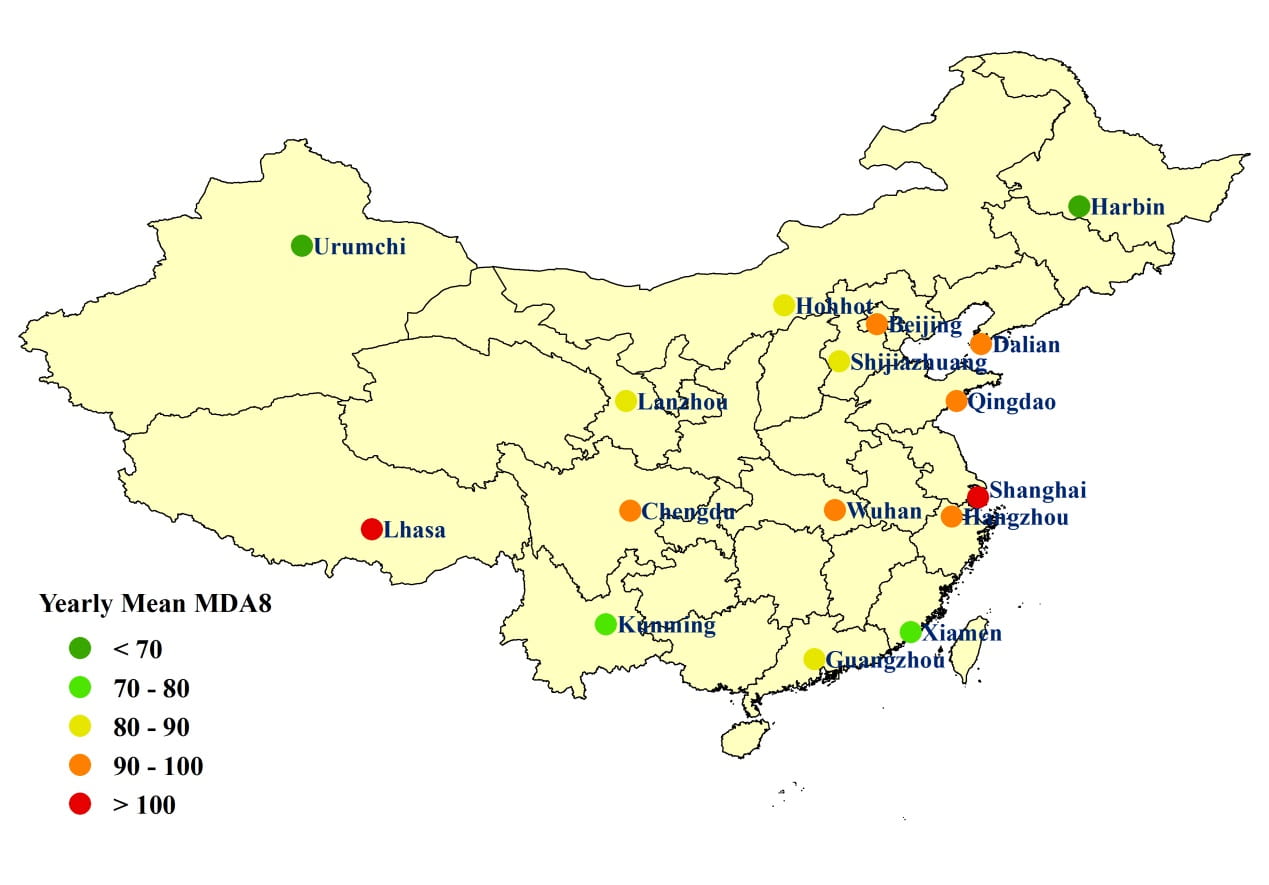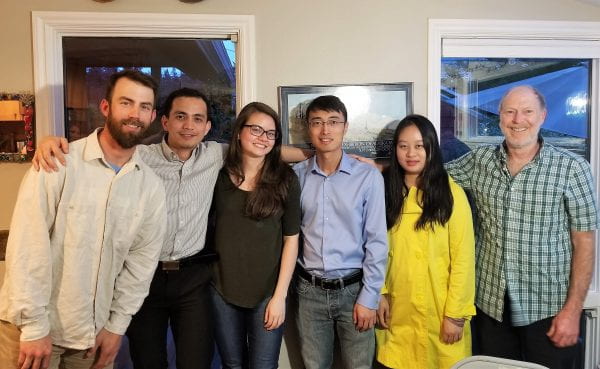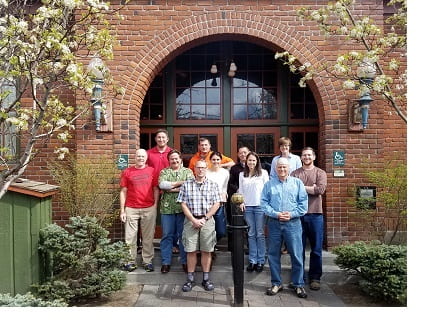The Jaffe Group has kicked off 2018 with 3 new publications.
- Xi Gong, et al., Ozone in China: Spatial distribution and leading meteorological factors controlling O3 in 16 Chinese cities. Gong and her coauthors examined ozone (O3) concentrations in 16 Chinese cities and developed a statistical model to estimate the maximum daily 8-hour (MDA8) O3 during 2014–2016. They found that the Generalized Additive Model (GAM) captured 43-90% of daily O3 variations. They also identified the leading meteorological factors that affect O3 for each city. Read the full paper here.

- Pao Baylon, et al., Impact of biomass burning plumes on photolysis rates and ozone formation at the Mount Bachelor Observatory. Baylon and his coauthors examined biomass burning (BB) events at Mt. Bachelor Observatory (MBO) during the summer of 2015. Biomass burning can emit large amounts of aerosols and gases into the atmosphere. These plumes contain compounds that react with sunlight to produce ozone, a health hazard to sensitive individuals. The photochemistry in BB plumes is poorly understand. Baylon and his coauthors addressed this knowledge gap by using MBO data to calculate ozone production rates and comparing these values with modeled values. Read the full paper here.
- Lei Zhang, et al., A quantification method for peroxyacetyl nitrate (PAN) using gas chromatography (GC) with a non-radioactive pulsed discharge detector (PDD). Zhang and his coauthors developed a method for continuous peroxyacetyl nitrate (PAN) measurements using gas chromatography with a non-radioactive detector. PAN is a known precursor of ozone. Their method has high accuracy and is more readily deployable in field campaigns than the traditional gas chromatography method that utilizes a radioactive detector. Read the full paper here.

 Datasets collected at Mt. Bachelor Observatory from 2004 to 2016 are now permanently archived and publicly available in the University of Washington ResearchWorks archive. The datasets include observations of ozone, carbon monoxide, mercury, nitrogen oxides, particulate matter and other atmospheric constituents. You can find the data by searching for Mt. Bachelor Observatory.
Datasets collected at Mt. Bachelor Observatory from 2004 to 2016 are now permanently archived and publicly available in the University of Washington ResearchWorks archive. The datasets include observations of ozone, carbon monoxide, mercury, nitrogen oxides, particulate matter and other atmospheric constituents. You can find the data by searching for Mt. Bachelor Observatory.